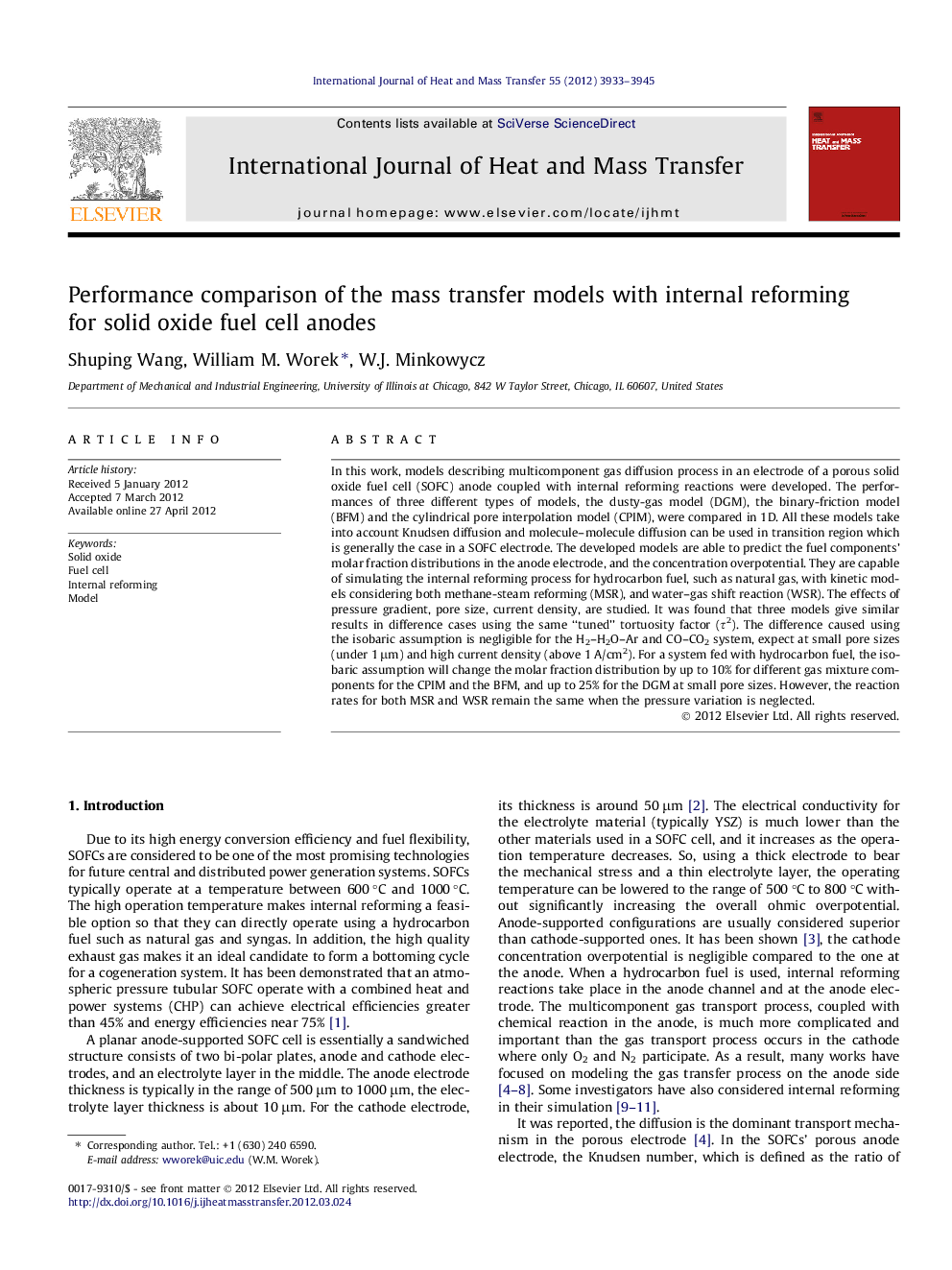| Article ID | Journal | Published Year | Pages | File Type |
|---|---|---|---|---|
| 659040 | International Journal of Heat and Mass Transfer | 2012 | 13 Pages |
Abstract
In this work, models describing multicomponent gas diffusion process in an electrode of a porous solid oxide fuel cell (SOFC) anode coupled with internal reforming reactions were developed. The performances of three different types of models, the dusty-gas model (DGM), the binary-friction model (BFM) and the cylindrical pore interpolation model (CPIM), were compared in 1D. All these models take into account Knudsen diffusion and molecule-molecule diffusion can be used in transition region which is generally the case in a SOFC electrode. The developed models are able to predict the fuel components' molar fraction distributions in the anode electrode, and the concentration overpotential. They are capable of simulating the internal reforming process for hydrocarbon fuel, such as natural gas, with kinetic models considering both methane-steam reforming (MSR), and water-gas shift reaction (WSR). The effects of pressure gradient, pore size, current density, are studied. It was found that three models give similar results in difference cases using the same “tuned” tortuosity factor (Ï2). The difference caused using the isobaric assumption is negligible for the H2-H2O-Ar and CO-CO2 system, expect at small pore sizes (under 1 μm) and high current density (above 1 A/cm2). For a system fed with hydrocarbon fuel, the isobaric assumption will change the molar fraction distribution by up to 10% for different gas mixture components for the CPIM and the BFM, and up to 25% for the DGM at small pore sizes. However, the reaction rates for both MSR and WSR remain the same when the pressure variation is neglected.
Related Topics
Physical Sciences and Engineering
Chemical Engineering
Fluid Flow and Transfer Processes
Authors
Shuping Wang, William M. Worek, W.J. Minkowycz,
